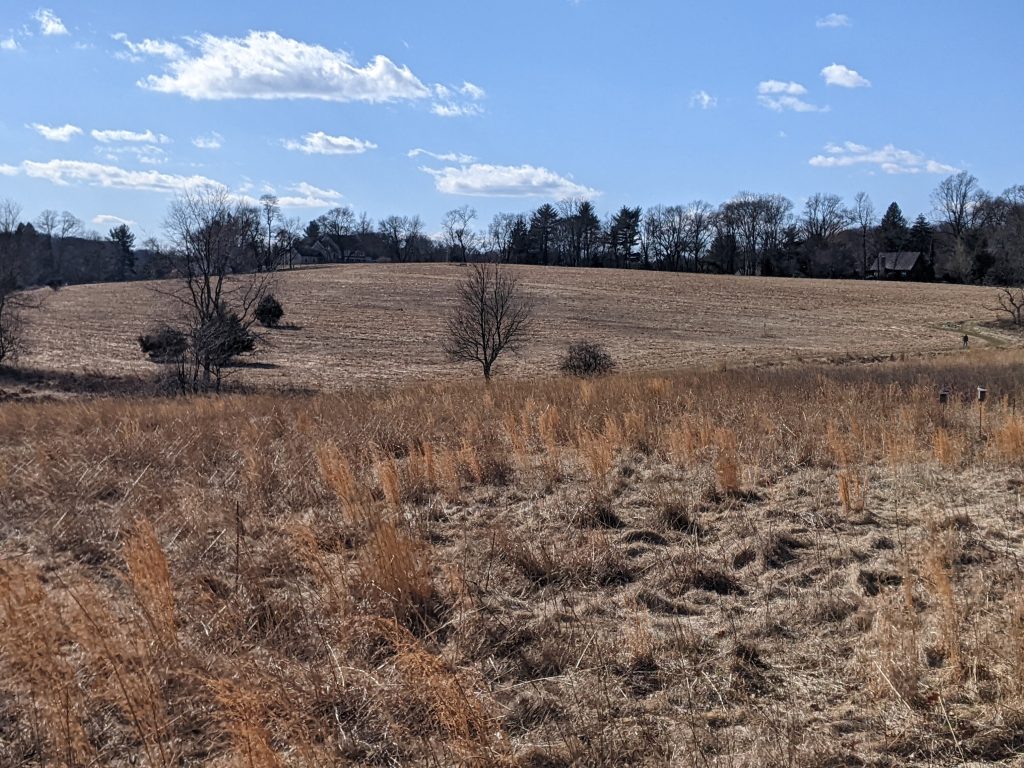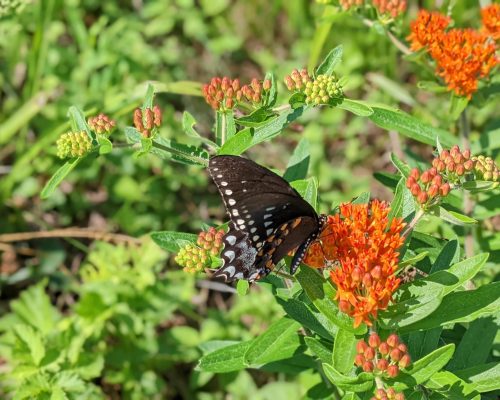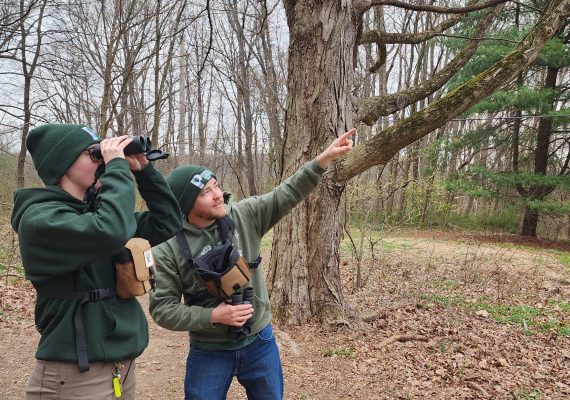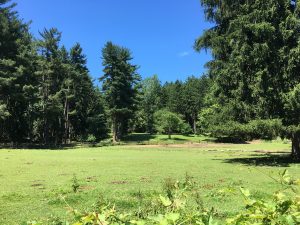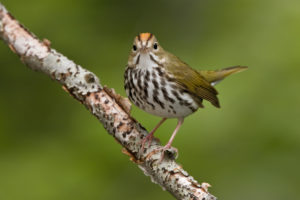Experimenting with Grassland Management
If you enjoy walking on Raytharn Trail through our grasslands every Spring, you may have noticed something is a little different this year.
The Pennypack Trust stewards over 208 acres of grasslands, most of which was originally Raytharn Farm and historically used as livestock pasture and agricultural fields. Beginning in the early 2000’s, Trust staff conducted experimental plantings of warm season grass species including big bluestem (Andropogon gerardii), Indian grass (Sorghastrum nutans), switchgrass (Panicum virgatum) and little bluestem (Schizachyrium scoparium). These tall, bunching grasses lend a charming pastoral aesthetic to our preserve and are intermingled with flowering forbs, cool season grasses and woodier plants like Pennsylvania blackberry (Rubus pensilvanicus).
Typically, the Trust staff leaves our grasslands uncut throughout the winter, leaving structure and seed sources to provide habitat for our resident birds and insects. In preparation for Spring, almost all of the grasslands are cut in late February. This year, staff is experimenting with mowing some areas and leaving others unmown all year long. Mowing will rotate every year among these areas over the next 3 years.
Grassland usage by birds and insects
Science staff and volunteers will be studying differences in bird nesting and activity in the mown and unmown grassland areas. Over 50 wooden bird nesting boxes are dispersed throughout our grasslands, supporting eastern bluebird and other native bird populations. Many migratory birds stop in the preserve to rest and take advantage of the standing vegetation for food and shelter from predators and the elements. From March through June, resident birds gather plant materials from grasslands to build their nests, or nest directly in the grass structure. Our staff and volunteers will conduct weekly point-count surveys, observing bird activity from distinct points in unmown and mown areas.
Along with plants, our insects serve as the foundation to our local food web. Insects serve as both vital food sources for fledgling birds (butterfly and moth caterpillars) and flower pollinators in our grasslands. Science staff will be inventorying the plant species in our grasslands to learn what diversity they support. In the same areas where staff conducts bird point-counts, we will be studying the insect pollinator-plant interactions of insects in the families Hymenoptera (bees and wasps), Lepidoptera (butterflies and moths), Diptera (flies) and Coleoptera (beetles) to determine what insects are using the grasslands.
As we rotate mowing through grassland parcels over the next couple of years, we hope to learn more about how mowing timing or leaving standing vegetation year-round benefits our local bird species. This research represents a first step in the Trust’s evaluation of our grassland diversity and function in the ecological community.
